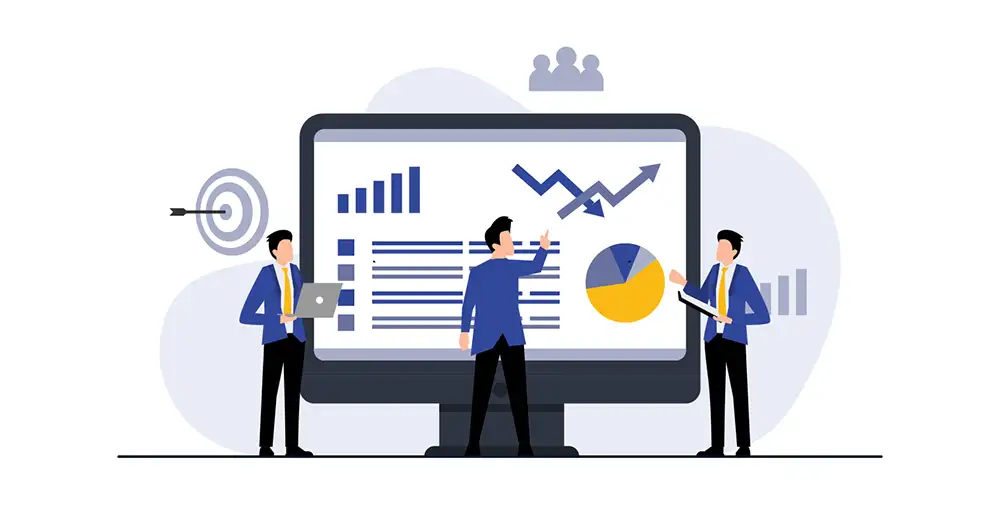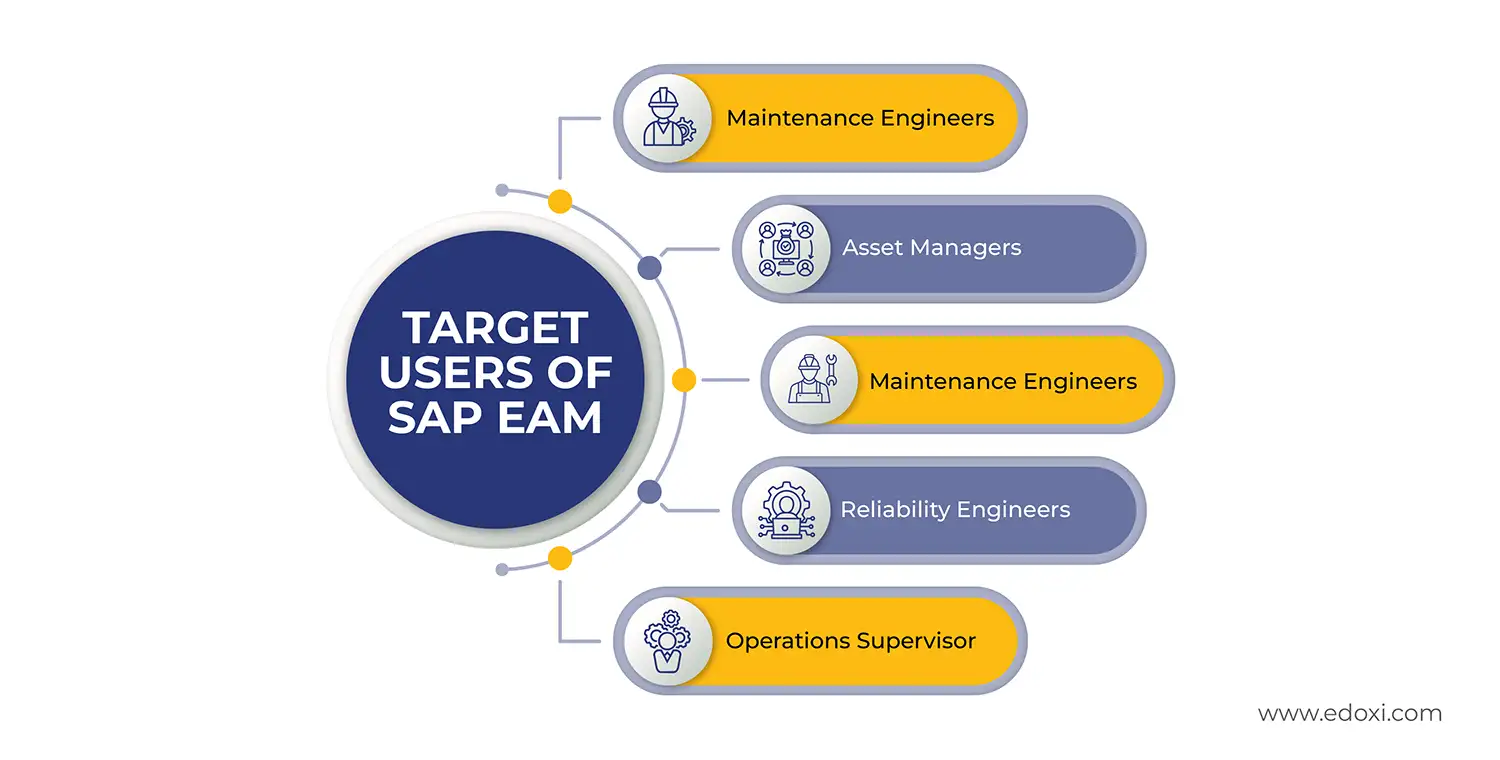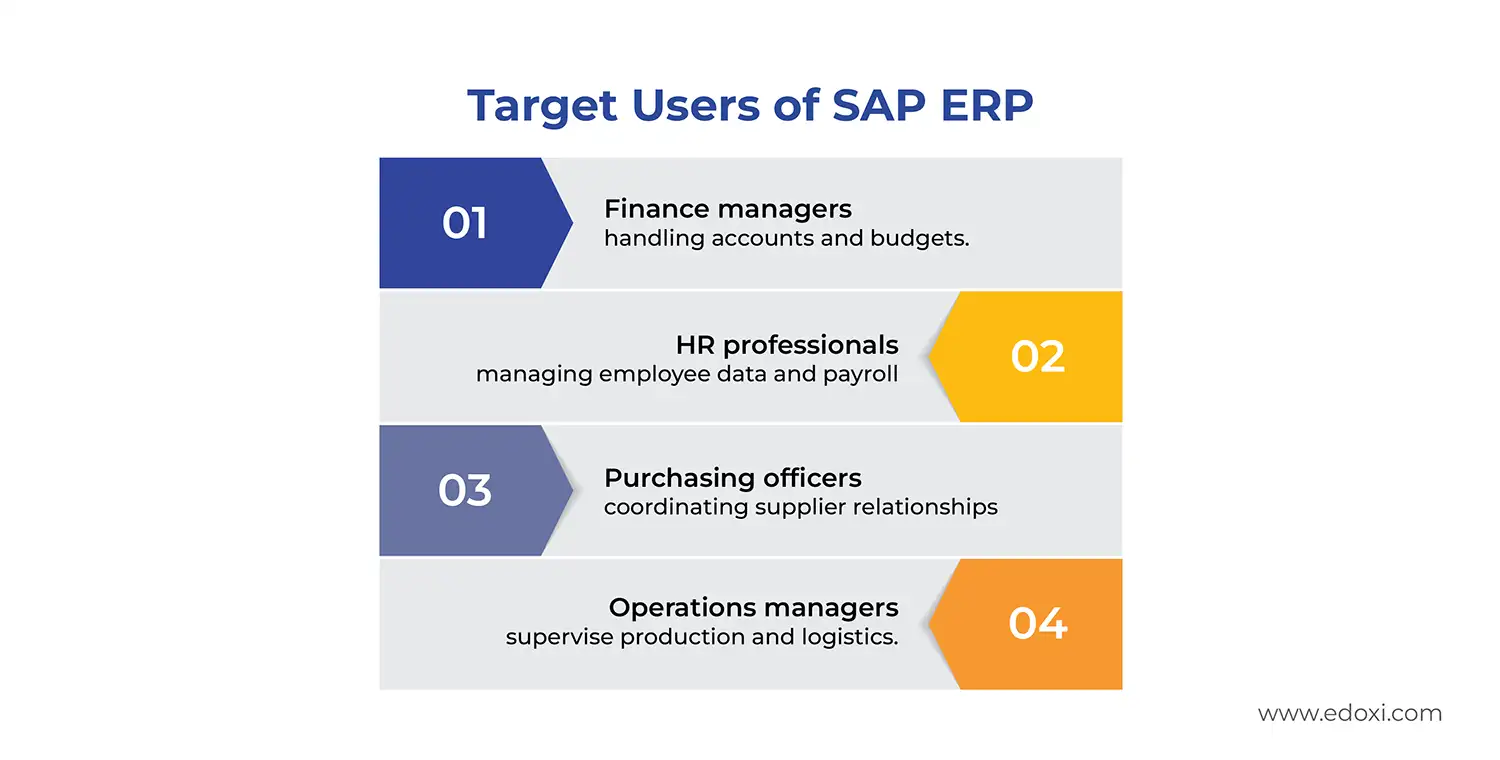 Asad Mahmood
Nov 17, 2025
Asad Mahmood
Nov 17, 2025

In the era of digital transformation, organisations started exploring various SAP systems to improve work efficiency. SAP EAM and SAP ERP are the most commonly used software solutions. Both have equal significance yet very unique functions.
Understanding the fundamentals of both SAP EAM and SAP ERP is a crucial step towards earning a career in enterprise technology. This blog helps you distinguish between the key differences of SAP EAM and SAP ERP, guiding you in deciding which one is most suitable for your career goals.
SAP Enterprise Asset Management (EAM) is a software solution within the SAP ecosystem. It is designed to manage the full life cycle of a business’s physical assets. The SAP EAM will take care of the entire process from planning and sourcing to the maintenance and disposal of physical assets. Optimising asset performance is also a key function played by SAP EAM.
SAP EAM plays a crucial role in the seamless operation of asset-intensive industries, including manufacturing, oil & gas, utilities, and transportation. Companies rely on SAP EAM to reduce downtime and maintenance costs. Additionally, SAP EAM helps to enhance asset reliabilityensureng compliance, and extend machinery lifespan.
SAP Enterprise Resource Planning (ERP) is a suite developed by the company SAP SE to combine various business functions of a company into a single system. The major functions that come under SAP ERP include accounting, finance, human resources, and supply chain management.
In both the asset-intensive and service-oriented industries, SAP ERP plays a vital role. SAP ERP has a dominant demand in service-oriented industries like the public sector, finance, and healthcare. With the help of SAP ERP, you can ensure data consistency and efficient decision-making, which further integrates your various business operations.
The key differences of SAP EAM and SAP ERP are evident in their key features, focus areas, and career options. Both are important aspects in the SAP ecosystem. SAP EAM is a specially designed module within the SAP ERP system, and it focuses mainly on asset performance. SAP ERP combines the core business operations into a single platform. Let’s explore the differences between SAP EAM and SAP ERP.
Key Features
Industry Applications
Target Users
Career Specialisations
Emerging Trends
Let’s examine the differences between SAP EAM and SAP ERP in detail.
Let’s discover the unique features and differences of SAP EAM and SAP ERP in detail.
The core features of SAP Enterprise Asset Management (EAM) include:
Asset Management
Maintenance Strategies
Work Order Management
Mobile App Accessibility
Predictive AI Analytics
Integration with Other Systems
Let’s explore these features in detail.
The core features of SAP Enterprise Resource Planning (ERP) include:
Finance Management
Human Resource Management
Supply Chain Management
Customer Relationship Management
Procurement
Production Management
Let’s explore these features in detail.
The industry applications of SAP EAM and SAP ERP are different. The SAP EAM is a crucial software for asset-intensive industries, whereas the SAP ERP caters for service-focused industries.
SAP EAM plays a vital role in asset-focused industries. These industries rely on SAP EAM to maintain their physical infrastructure, and machinery is the foundation of operations. These industries include:
SAP ERP has a crucial significance in almost every major industry. It is mainly used in service-focused sectors that rely on complex business coordination and data consistency. The efficiency of operations is enhanced by using SAP ERP, which ensures a smooth flow of data and communication across various departments. The industries include:
The target users of SAP EAM and SAP ERP may differ with the industries they cater to. Let’s explore the target users of SAP EAM and SAP ERP.
The SAP EAM is mainly used by professionals who are responsible for managing a company’s physical assets. Using SAP EAM software helps to ensure all assets remain in optimal condition to reduce downtime and extend their lifespan. Let’s see the professionals who can rely on SAP EAM for better work quality.

SAP ERP caters to a wide range of users who handle different business operations within an organisation. It helps to combine various business operations such as finance, human resources, procurement, supply chain, sales, and manufacturing into a unified platform. This enhances the efficiency and smooth workflow of businesses. Let’s explore the professionals who can rely on SAP ERP for enhanced work efficiency.

Both the SAP EAM and SAP ERP offer the most rewarding careers. There are significant differences in career specialisations, required skills, and job responsibilities of the SAP EAM and SAP ERP professionals.
A certification in SAP can enhance your career advancement prospects.
Here, you may check the Importance of SAP Certification for Your Career Enhancement and the Top 10 SAP Certification to Help You Get Ahead.
Let’s explore more about the career specialisations of SAP EAM and SAP ERP.
The demand for SAP EAM professionals is rising in asset-intensive industries as these industries are embracing digital transformation, IoT, and predictive maintenance.
Common career paths in SAP EAM include:
SAP ERP offers numerous career pathways in both technical and functional domains. The role of a SAP ERP professional is critical in enhancing productivity, decision-making, and overall company performance.
Common career paths in SAP ERP include:
The SAP EAM and SAP ERP are constantly evolving with digital transformation, driving more towards data-driven, intelligent, and connected operations. Here we list the major emerging trends in SAP EAM and SAP ERP.
Both SAP EAM and SAP ERP offer rewarding and reputable careers. Choosing which one you should learn depends on your career background, interests, and professional goals.
Choose SAP EAM,
Choose SAP ERP,
There is a common practice among professionals, that is, they master ERP basics first, then specialise in EAM for deeper expertise.
As the digital transformations continue to evolve, the need for SAP professionals is getting even higher. To specialise in any domain of SAP, you need to have a firm understanding of it. I hope this blog has given you important insights and guidance to make a decision on which one you should learn, SAP EAM or SAP ERP.
1. Is SAP EAM a part of SAP ERP?
2. Which SAP software should I learn first?
Preferably, learning SAP ERP fundamentals first, then specialising in SAP ERP for deeper knowledge, is the best step for a beginner.
3. Does SAP offer certification?
Yes, SAP offers certifications in SAP EAM and SAP ERP that are helpful in validating your skills and enhancing your career prospects.
4. SAP EAM or SAP ERP, which has the highest job demands?
SAP ERP has a broader demand and offers jobs across various industries. However, high-value careers in niche asset-focused sectors are offered by SAP EAM.

SAP® S/4 HANA / MS Excel/ MS Power BI Certified Trainer
Asad Mahmood is an accomplished SAP® S/4HANA Certified Professional and a Trainer with expertise in SAP® Business One 10.0 and SAP® S/4HANA–ECC Systems and Odoo® ERP system. He proved his mettle as an Information Systems Consultant with an experience of over 10+ years in Trading, Manufacturing/Production, and Information Technology.
Mr. Asad is proficient in business process integrations and organizational policy implementation within the information systems landscape. As a self-disciplined, punctual, and transparent person with good communication skills, Mr. Asad Mahmood enjoys training a vibrant workforce. He is an expert at organizing and facilitating management and team-building programs and activities.